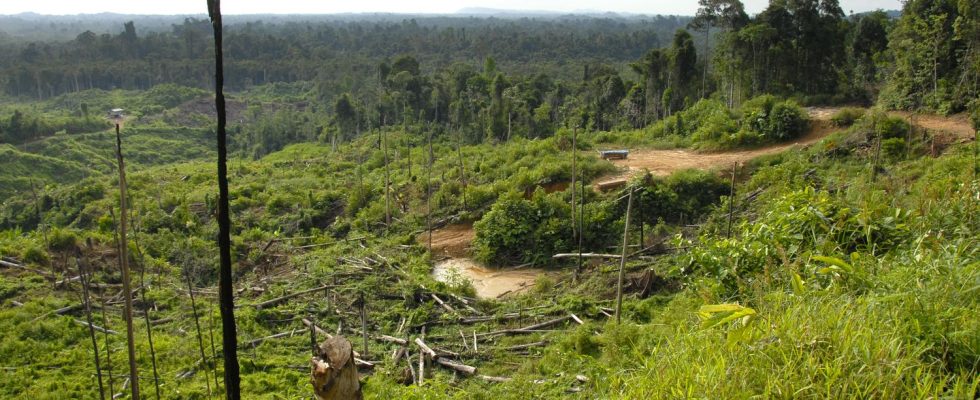By 2022, only three of the ten countries with the largest areas of deforestation have reached their temporary targets, including Malaysia. For its part, the Democratic Republic of Congo is seeing its forest degrade.
In 2022, global deforestation continued to increase and reached 6.6 million hectares worldwide, according to a report from the NGO Forest Declaration Assessment (link in English). This increase greatly jeopardizes the objectives signed there two years ago by a hundred countries, who hoped eliminate deforestation by 2030. But faced with this global result, there are very diverse situations.
In the DRC, “forests empty of animals”
The Democratic Republic of Congo is home to part of the Congo Basin equatorial forest, which stretches over 3.7 million km2, in the heart of the African continent. According to WWF, it is home to nearly 10,000 species of plants, 400 species of mammals and even 1,000 species of birds. Now the planet’s first lung, its future is currently being discussed in Brazzaville, in the Republic of Congo, at the Summit of the Three Basins.
The DRC is one of the least developed countries in the world. Human activity in the country therefore does not have a major impact on forest degradation, despite the very high birth rate. Photographer Gwenn Dubourthoumieu was surprised by the state of the forest during a recent ten-week trip to the DRC. “What struck us was not so much to see a forest that had disappeared, but rather to see a degraded forest. That is to say a forest empty of animals, where almost all of the large mammals have disappeared, he explains. Sometimes we have silent forests that have been nibbled away by the population for slash-and-burn agriculture or makala, therefore charcoal.”
Measures to preserve the equatorial forest
Each year, the equatorial forest loses nearly 500,000 hectares of its forest cover and this is why many countries, including France, are currently looking into the subject. Several projects are being developed but the writer Guillaume Jan regrets that this is not enough. “There is no state initiative, only NGO initiatives, but they are very localized and rarely long-term”he explains.
Congolese President Félix Tshisekedi has made it an eminently political subject and the DRC, presented as a “solution country”, has found a way to bring money into the state coffers, in particular with carbon credits. Indeed, another threat weighs on the Congo Basin forest since certain oil blocks are located in its heart and could interest certain operators.
Malaysia, a good student against deforestation
According to the Forest Declaration Assessment report, Malaysia is one of three countries that have achieved their targets for limiting deforestation. Kuala Lumpur would thus be on track to achieve the 2030 forestry objectives. This progress in conservation can be explained in particular by the application of laws and government investments in institutions.
Malaysia has also made a political commitment to the NDPE (No Deforestation, No Peat and No Exploitation) either “No Deforestation, No Peat and No Exploitation” in French. As the name suggests, the measure prohibits further deforestation and peatland development. The aim is to protect flora and fauna, but also the interests of indigenous communities.
However, some NGOs such as Greenpeace Malaysia point out that the NDPE must be widely respected by all to see real significant progress, as pointed out by Heng Kiah Chun, campaign manager of the NGO. “Some of the world’s biggest retailers and brands have committed to deforestation-free supply chainshe says. The NDPE provides an excellent tool for the industry to reform. But the industry’s failure to implement these policies further damages the sector’s reputation.”
A framework around palm oil production
If the recent European legislation on palm oil is debated in Malaysia, the local press mainly mentions the national certification called MSPO, launched in 2015, which notably involves traceability requirements. It concerns businesses and more than 300,000 small farmers in the country. Malaysia, like Indonesia, has in fact developed government certification standards.
Kuala Lumpur has therefore achieved its targets for reducing the loss of primary forests for 2022, but Malaysia of course remains a country affected by deforestation. According to Global Forest Watch, the total area of primary rainforests in Malaysia decreased by 18% between 2002 and 2022. The first two states affected are Sarawak and Sabah on the island of Borneo.
